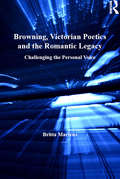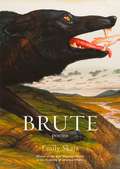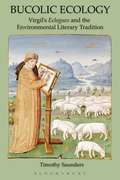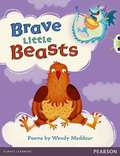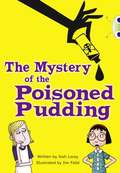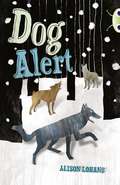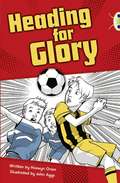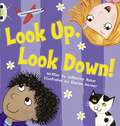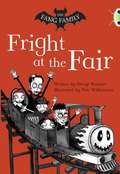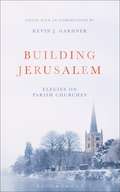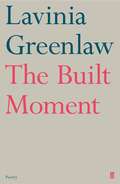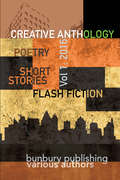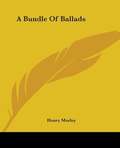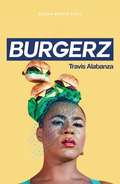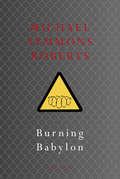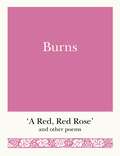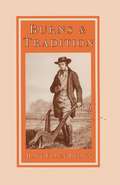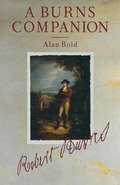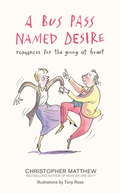- Table View
- List View
Browning, Victorian Poetics and the Romantic Legacy: Challenging the Personal Voice
by Britta MartensTaking an original approach to Robert Browning's poetics, Britta Martens focuses on a corpus of relatively neglected poems in Browning's own voice in which he reflects on his poetry, his self-conceptualization and his place in the poetic tradition. She analyzes his work in relation to Romanticism, Victorian reactions to the Romantic legacy, and wider nineteenth-century changes in poetic taste, to argue that in these poems, as in his more frequently studied dramatic monologues, Browning deploys varied dramatic methods of self-representation, often critically and ironically exposing the biases and limitations of the seemingly authoritative speaker 'Browning'. The poems thus become devices for Browning's detached evaluation of his own and of others' poetics, an evaluation never fully explicit but presented with elusive economy for the astute reader to interpret. The confrontation between the personal authorial voice and the dramatic voice in these poems provides revealing insights into the poet's highly self-conscious, conflicted and sustained engagement with the Romantic tradition and the diversely challenging reader expectations that he faces in a post-Romantic age. As the Victorian most rigorous in his rejection of Romantic self-expression, Browning is a key transitional figure between the sharply antagonistic periods of Romanticism and Modernism. He is also, as Martens persuasively demonstrates, a poet of complex contradictions and an illuminating case study for addressing the perennial issues of voice, authorial authority and self-reference.
Browning, Victorian Poetics and the Romantic Legacy: Challenging the Personal Voice
by Britta MartensTaking an original approach to Robert Browning's poetics, Britta Martens focuses on a corpus of relatively neglected poems in Browning's own voice in which he reflects on his poetry, his self-conceptualization and his place in the poetic tradition. She analyzes his work in relation to Romanticism, Victorian reactions to the Romantic legacy, and wider nineteenth-century changes in poetic taste, to argue that in these poems, as in his more frequently studied dramatic monologues, Browning deploys varied dramatic methods of self-representation, often critically and ironically exposing the biases and limitations of the seemingly authoritative speaker 'Browning'. The poems thus become devices for Browning's detached evaluation of his own and of others' poetics, an evaluation never fully explicit but presented with elusive economy for the astute reader to interpret. The confrontation between the personal authorial voice and the dramatic voice in these poems provides revealing insights into the poet's highly self-conscious, conflicted and sustained engagement with the Romantic tradition and the diversely challenging reader expectations that he faces in a post-Romantic age. As the Victorian most rigorous in his rejection of Romantic self-expression, Browning is a key transitional figure between the sharply antagonistic periods of Romanticism and Modernism. He is also, as Martens persuasively demonstrates, a poet of complex contradictions and an illuminating case study for addressing the perennial issues of voice, authorial authority and self-reference.
Brute: Poems
by Emily SkajaSelected by Joy Harjo as the winner of the Walt Whitman Award of the Academy of American Poets'Taut, ferocious . . . This is a book about survival, and a welcome, confident debut' New York Times Book ReviewEmily Skaja's debut collection is a fiery, hypnotic book that confronts the dark questions and menacing silences around gender, sexuality and violence. Brute arises, brave and furious, from the dissolution of a relationship, showing how such endings necessitate self-discovery and reinvention. The speaker of these poems is a sorceress, a bride, a warrior, a lover, both object and agent, ricocheting among ways of knowing and being known. Each incarnation squares itself up against ideas of feminine virtue and sin, strength and vulnerability, love and rage, as it closes in on a hard-won freedom.Brute is absolutely sure of its capacity to insist not only on the truth of what it says but on the truth of its right to say it. 'What am I supposed to say: I'm free?' the first poem asks. The rest of the poems emphatically discover new ways to answer. This is a timely winner of the Walt Whitman Award, and an introduction to an unforgettable voice.
Bucolic Ecology: Virgil's Eclogues and the Environmental Literary Tradition
by Timothy SaundersBeginning in outer space and ending up among the atoms, "Bucolic Ecology" illustrates how these poems repeatedly turn to the natural world in order to define themselves and their place in the literary tradition. It argues that the 'Eclogues' find there both a sequence of analogies for their own poetic processes and a map upon which can be located other landmarks in Greco-Roman literature. Unlike previous studies of this kind, "Bucolic Ecology" does not attribute to Virgil a predominantly Romantic conception of nature and its relationship to poetry, but by adopting such differing approaches to the physical world as astronomy, geography, topography, landscape and ecology, it offers an account of the Eclogues that emphasises their range and complexity and reaffirms their innovation and audacity.
Bucolic Ecology: Virgil's Eclogues and the Environmental Literary Tradition
by Timothy SaundersBeginning in outer space and ending up among the atoms, "Bucolic Ecology" illustrates how these poems repeatedly turn to the natural world in order to define themselves and their place in the literary tradition. It argues that the 'Eclogues' find there both a sequence of analogies for their own poetic processes and a map upon which can be located other landmarks in Greco-Roman literature. Unlike previous studies of this kind, "Bucolic Ecology" does not attribute to Virgil a predominantly Romantic conception of nature and its relationship to poetry, but by adopting such differing approaches to the physical world as astronomy, geography, topography, landscape and ecology, it offers an account of the Eclogues that emphasises their range and complexity and reaffirms their innovation and audacity.
Bucolics (in English)
by VirgilAlso known as The Ecloques, this is the first of the three major works of the Latin poet Virgil.
Bug Club Blue Brave Little Beasts (PDF)
by Wendy MeddourThis title is part of Pearson's Bug Club - the first whole-school reading programme that joins books and an online reading world to teach today's children to read. In this book: The Griffin and Bertie Dragon think they don't fit in. They just need someone to show them that they don't need to fit in to have fun! This title is suitable for ages 5-6 (Blue level)
Bug Club, Blue (KS2) B/4a: The Mystery Of The Poisoned Pudding (PDF)
by Josh LaceyThis title is part of Bug Club, the first whole-school reading programme to combine books with an online reading world to teach today's children to read. In this Year 5 Blue B (NC level 4a) fiction novel . . . A restaurant in France, a fat man who collapses while eating, and a poisoned chocolate pudding: another mystery that has to be solved Who dunnit? Inspecteur Timbre is baffled -- this time, there is no obvious suspect. But Matt and Veronique are soon on the case
Bug Club, Grey A/3a: Dog Alert (PDF)
by Alison LohansBold, colourful readers with kid-friendly characters and subjects they'd choose for themselves.
Bug Club, Grey A/3a: Heading For Glory (PDF)
by Hiawyn OramThis title is part of Bug Club, the first whole-school reading programme to combine books with an online reading world to teach today's children to read. In this Year 4 Grey A (NC level 3a) fiction short story collection . . . I'M NOT JOINING BROAD ELM RANGERS That's Ben, yelling at his dad. Brilliant Ben's been talent-spotted, but he wants to stay with the rest of us on Hollyfield Primary's football team - which is more than can be said of equally-brilliant Florence. I'm Ethan. Let me tell you some stories about football, mates and loyalty . . .
Bug Club, Pink A: Look Up, Look Down (PDF)
by Catherine BakerThis title is part of Pearson's Bug Club - the first whole-school reading programme that joins books and an online reading world to teach today's children to read. In this book, Zac and Daisy are in the park. What do they see? Suitable for Ages 4-5 (Pink Level 1).
Bug Club, White, A: Fright At The Fair (PDF)
by Sheryl WebsterThis title is part of Pearson's Bug Club - the first whole-school reading programme that joins books and an online reading world to teach today's children to read. In this book: It is Mother Fang's birthday treat and the Fang Family are off to the fair What could possibly go wrong? Suitable for ages 6-7 (White level A).
Building Jerusalem: Elegies on Parish Churches
by Kevin J. GardnerNostalgia and love of parish churches is deeply embedded in the British psyche. Following the success of Poems in the Porch, a collection of hitherto unpublished poems on parish churches by Sir John Betjeman, Kevin Gardner has now assembled a new anthology of poems on the same theme yet with a greater diversity of post-war authors – Philip Larkin, R. S. Thomas, John Betjeman, C. Day Lewis, U. A. Fanthorpe and many others. The collection is introduced by a fascinating critical introduction, 'Anglican Memory and Post-war British Poetry' and will appeal to church and poetry lovers alike in their droves.
The Built Environment (Pavilion Poetry)
by Emily HaslerEmily Hasler’s debut collection moves between the local and the distant, the urban and the rural, and past and present. This is a poetry of emotional density underpinned with a lightness of touch. Hasler’s poems are structural but organic, detailed but lively, thoughtful but playful. There is a rare combination of exactitude and wonder which leads the reader in and keeps them there. Often taking their cue from the work of visual artists, these poems probe at the ways we understand and reconstruct our environment. Examining places, objects, buildings, landscapes, rivers and bridges, these poems ask how our world is made, and how it makes us.
The Built Environment (Pavilion Poetry)
by Emily HaslerEmily Hasler’s debut collection moves between the local and the distant, the urban and the rural, and past and present. This is a poetry of emotional density underpinned with a lightness of touch. Hasler’s poems are structural but organic, detailed but lively, thoughtful but playful. There is a rare combination of exactitude and wonder which leads the reader in and keeps them there. Often taking their cue from the work of visual artists, these poems probe at the ways we understand and reconstruct our environment. Examining places, objects, buildings, landscapes, rivers and bridges, these poems ask how our world is made, and how it makes us.
The Built Moment
by Lavinia GreenlawLavinia Greenlaw's latest collection, The Casual Perfect (2011), focused on 'the achievement of the provisional'. In the near decade since writing those poems, she has found herself exploring what we build out of the provisional: beginnings and endings, arrivals and departures, and the moments we fix as memories, fixing too their joy and pain. The Built Moment is divided into two sections. The first, 'The Sea is an Edge and an Ending', is a sequence of poems about her father's disappearance into Alzheimer's. It is not a narrative of illness so much as a meditation on the metaphysics of memory loss. What does it mean only to exist in the present, for your sense of self to come loose and for the past to float free? The second half of the book is called 'The Bluebell Horizontal'. If the first section is about loss (the verticals), this section is about possibility (the horizontals). It includes a prayer ('Men I Have Heard in the Night'), a blessing ('Fleur de Sel') and a speculation on why we cling on to pain ('The Break'). There are poems about Joy Division and David Bowie, and an elegy for first love. There are structures that arrest remembering and forgetting - monoliths and oubliettes - and the fundamental arrest of a poet's difficulty with words. These poems are about what we make and hold onto and offer one another. They are also about how, as we get older and death becomes more and more a part of life, what we build and what we break out of becomes more important than ever.
Bunbury Creative Anthology: 2016 (Bunbury Anthologies #1)
by Various AuthorsBunbury Magazine is an independent arts and literature journal that focuses on grass-roots creativity. The magazine provides a platform for artists, photographers, authors, poets, and other creative people to publish and gain exposure that they might not ordinarily obtain through mainstream channels. This anthology brings together poetry, life writing short stories, and flash fiction on subjects as diverse as the home life of Wile E. Coyote, the nature of life and death, and Christmas in Wales. Always varied, anything is possible in this collection of work. Bunbury is an online ezine publisher, based in Manchester, that also runs real-world events. They are collaborating with Wordcatcher Publishing, a print publisher, to offer contributors’ work to a wider audience.
A Bundle of Ballads
by Henry MorleyHenry Morley (15 September 1822 – 1894) was a writer on English literature and one of the earliest Professors of English Literature. The son of an apothecary, he was born in Hatton Garden, London, educated at a Moravian school in Germany, and at King's College London, and after practicing medicine and keeping schools at various places, went in 1850 to London, and adopted literature as his profession. This book is a collection of his ballads.
Burgerz (Oberon Modern Plays)
by Travis AlabanzaHurled words. Thrown objects. Dodged burgers.After someone threw a burger at them and shouted a transphobic slur, performance artist Travis Alabanza became obsessed with burgers. How they are made, how they feel, and smell. How they travel through the air. How the mayonnaise feels on your skin.BURGERZ is the climax of their obsession – exploring how trans and gender non-conforming bodies exist and how, by them reclaiming an act of violence, we can address our own complicity.
Burning Babylon
by Michael Symmons RobertsIn his first two collections - Soft Keys and Raising Sparks - Michael Symmons Roberts established himself as a lyric and dramatic poet with metaphysical concerns. In this new collection, those concerns are as strong as ever, but rooted in a specific place and time. These poems describe the personal and public rise and fall of Greenham Common. The public story, as one of the most contentious missile bases of the cold war, ended with fences removed, buildings demolished, the base returned to common land. The private history emerges from the poet's own experience, as an adolescent living a mile away from Greenham Common at the height of its powers. That third community of locals - not the USAF or the peace camps - is finally given a voice in Burning Babylon.This is war poetry, but from an undeclared war in which battle lines were unclear, secrecy was an obsession, and threat was the chief weapon. At the heart of it all was that real and mythic gated city - the base - which was both a key part of the poet's childhood landscape, and the prime nuclear target in Britain. This image of a huge, occult and lethal power latent behind wire in the middle of England has haunted the minds of a generation - just as the poems in this book will resonate long after it is laid aside.
Burns: 'A Red, Red Rose' and Other Poems (Pocket Poets #1)
by Robert BurnsIn his short life, Robert Burns forged for himself a reputation as a poet and songwriter that has never been eclipsed. Today, more than 200 years after his death, his verse remains among the most popular in the world.Best known for his dialect lyrical verse on nature, love, patriotism and rural life, as well as for such well-loved songs as ‘Auld Lang Syne’ and ‘Robert Bruce’s March to Bannockburn’ (‘Scots Wha Hae’), he was equally as skilful with great lyrics on philosophical subjects. Offering everything from simple ballads to great set pieces like ‘Tam O’Shanter’, this collection celebrates the work of the poor farmer-turned-exciseman who became, literally, the voice of an entire nation.
A Burns Companion (Literary Companions)
by Alan BoldThis Companion, designed as an authoritative biographical and critical guide to Burns, is in six sections. Part I places Burns in context with a Chronology, 'The Burns Circle' and a Topography. Part II looks at the Burnsian issues of religion, politics, philosophy, drink, drama and sex. Part III an essay on Burns as a poetic phenomenon, is sure to provoke debate about the relevance of Burns to his time and ours. Part IV examines twenty-five poems, eighteen verse epistles and twenty-six songs as well as commenting on the letters, political ballads and Common Place Books. A Select Bibliography (Part V) and four Appendixes (Part VI) are followed by a glossary of Scots words, and index of poems and a general index.
A Bus Pass Named Desire
by Christopher Matthew'It's never too late to have a fling, for autumn is just as nice as spring . . .'Christopher Matthew's latest collection of canny comic verse negotiates the perils and pitfalls of romance in later years. Love is revealed in the most unlikely places, with the most improbable people seeking it. Whether in Dorking, Diss, Clapham Junction or West Wittering, there are amorous opportunities waiting to be seized at the bridge table, on the tennis court, in the herbaceous border, on a bicycle made for two, or simply in warm companionship. Often hilarious and always touching, these delightful and stirring tales of late-flowering love (and even mild debauchery in a retirement home) are a celebration of life for the young at heart.And never again will you take the 49 bus without a sideways glance at the driver.
